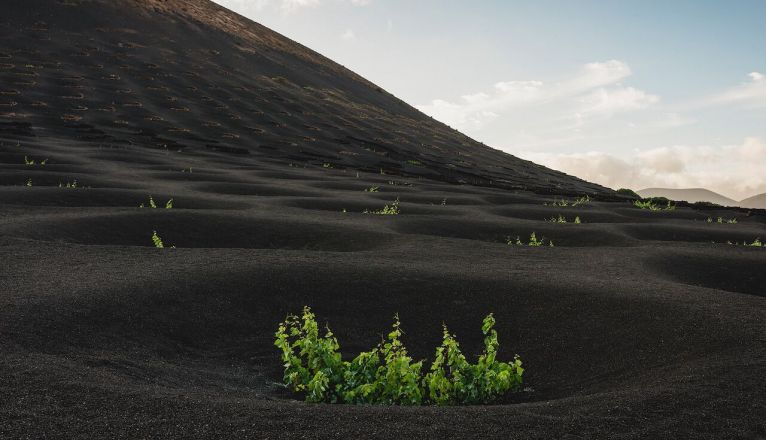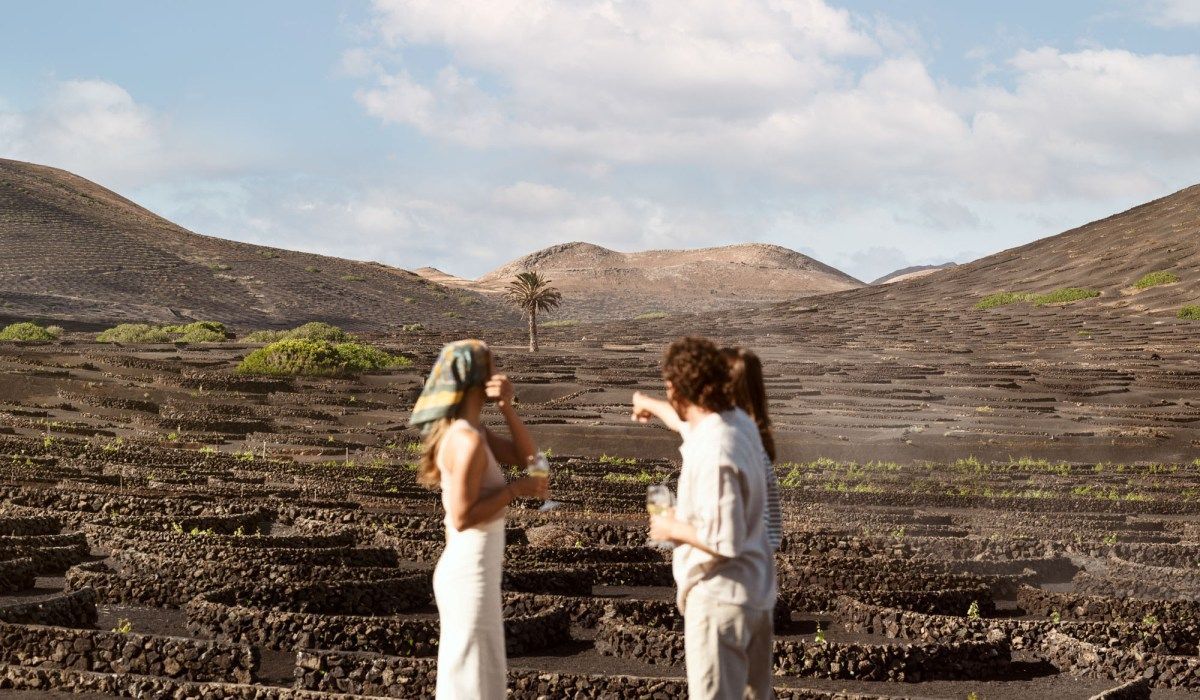You have not known Lanzarote fully unless you have crossed its landscapes dotted with horseshoe shaped structures and holes, nor without having tasted one of its wines. Lanzarote wines have achieved international prestige, but behind them there is a history of effort and adaptation to nature, in a terrain that is initially hostile to agriculture.
With an arid soil, bathed by lava from the volcanoes and unaccustomed to rain, the miracle of Lanzarote wines took place. As allies, the winegrowers counted on the trade winds, which condense the humidity of the ocean on the porous volcanic ash. But to achieve this, they first needed a mix of ingenuity and hard work.
The key solution was to dig holes in the shape of a funnel within the volcanic ash, until they reach the soil. Some are more than two meters deep, and house between one and three vines, which feed on the dew that is retained on the ash and that filters into the ground during the day.
Around each hole, semicircular stone walls had to be built as well to protect the vines from excessive wind. A titanic work that not only contributed to the agricultural development of the island, but also to configure one of the landscapes that define the identity of Lanzarote.
Volcanic Malvasia, Listán Blanco, Moscatel, Diego, Burra Blanca, Breval, Pedro Ximénez, Listán Negra and Negramoll are the grape varieties used to make Lanzarote wines.
Most of the harvest goes into the production of white wines, whether they are dry, semi-dry, semi-sweet, sweet, liquor wines, "crianza" and sparkling wines, although there are also rosé and red wines of high-quality.
The Board of the Qualified Denomination of Origin, Wines of Lanzarote, has more than twenty wineries registered, and some are open to visitors. In addition, it is also possible to enjoy a wine tasting inside, and even a meal among vineyards.

The most emblematic area is La Geria, although it is not the only one. In total, Lanzarote is home to some 2,000 cultivated hectares, each with its own charm.
La Geria: Area of vineyards located between the municipalities of Yaiza and Tías. In La Geria the hole system is used, due to the thickness of the layer of volcanic lapilli or rofe, also called picón, which in some areas reaches even 3 meters in height. This means that the planting density is lower than in the rest of the island.
Masdache: Area located between the municipalities of Tías and San Bartolomé. The cultivation system is mainly that of holes, although the picón layer is less thick than in the La Geria area.
Tinajo: Vineyard area where the cultivation system is that of perimeter ditches.
Ye-Lajares: Area located in the municipality of Haría, although due to the characteristics of the soil it has low production.
